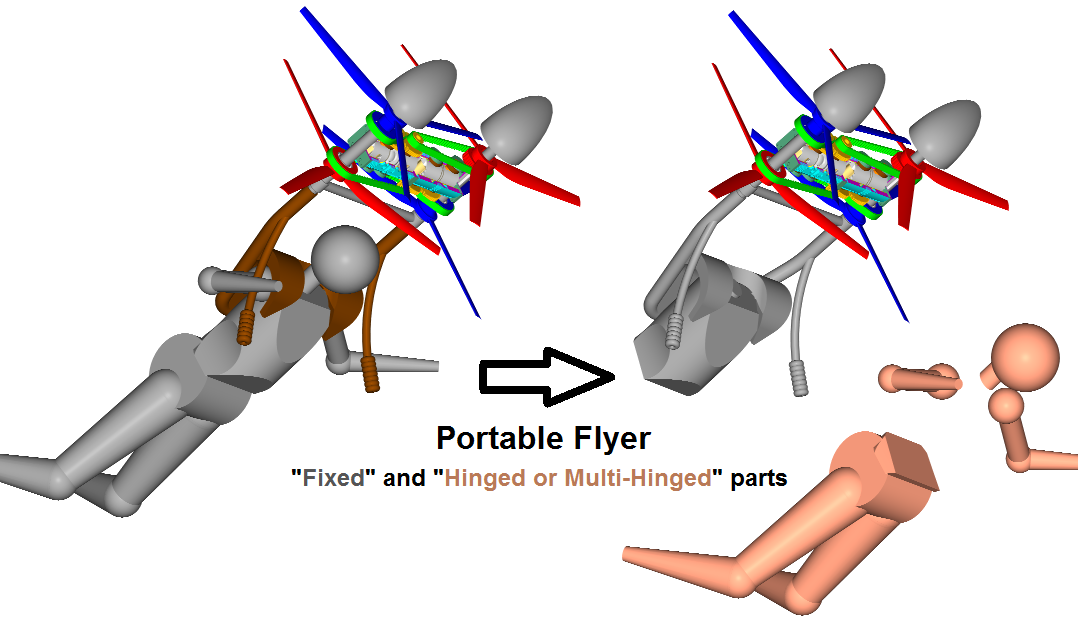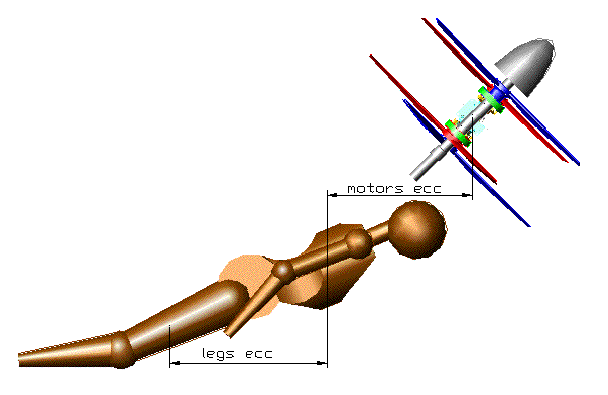Hello Nzjrs
You write:
“The PF equivalent is asking a person hanging from a tree by his shoulders if twerking his bum to the back vectors the thrust rigidly attached to his shoulders enough to do anything.”
The Portable Flyer is different than what you describe.
Quote from the page 180 of this discussion:
The following image shows at its upper-right side the “fuselage”. It is the grey-colored assembly that includes the engines, the frame (side pipes and saddle) and the pilot’s upper torso (back, chest and shoulders). This assembly / fuselage is, more or less, a fixed / rigid body.

At the bottom-right side of the image they are shown (by light-brown color) all the “hinged” and “multi-hinged” parts (members) of the pilot; while the upper arms are directly hinged to the “fuselage” (as defined above), the lower arms and hands are “multi-hinged” as hinged to parts that are already hinged to the fuselage.
The question is:
What is gonna fall?
The engines and the upper torso, as a rigid body, will fall (or turn downwards) together, as a single rigid body.
The hinged parts (head, limbs, lower torso) also tend to “fall” (or turn) due to the moment of their weight about their respective hinge points.
Depending on their pose, the “parts / members / “fins” of the pilot provide some lift (not necessarily positive (i.e. upwards), but also negative if required) and drag. All these either with the pilot wearing a wing suit, or not.
If, at horizontal flight, pilot’s legs are completely horizontal (no lift), they balance with their weight the part of the moment from the engines not balanced by the “eccentric” horizontal aerodynamic drag on the engines.
If, at horizontal flight, the legs of the pilot are “leaning to the sky” (like the tail “horizontal stabilizers” of the airplanes, which provide negative lift for the sake of safety: to avoid an uncontrolled stall) they can provide additional aerodynamic moment that tends to turn the fuselage upwards.
End of Quote
Thanks
Manolis Pattakos


